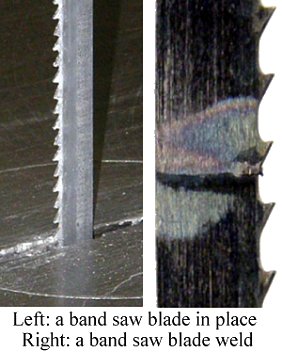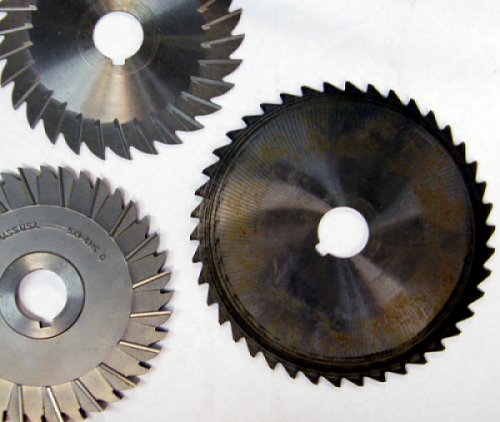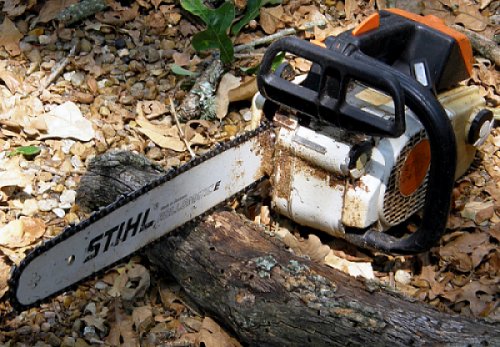Continuous Saws
Today, let's saw wood. The University of Houston's College of Engineering presents this series about the machines that make our civilization run, and the people whose ingenuity created them.
A TV program about logging has set me to thinking about continuous saws -- about the odd conceptual leap from back-and-forth sawing to saws that continuously cut in the same direction -- circular saws, band saws, and chainsaws.
Let's abstract the problem of sawing. Let's look for the underlying obstacle. Sawing calls to mind the invention of the wheel: To move forward continuously, humans and animals make oscillatory motions -- walking, running, crawling. Only about 5300 years ago, someone in the Near East realized that a wheel on an axle would allow continuous forward motion, without jerky to-and-fro action.
So too with sawing: The first breakthrough was also a wheel on an axle. It was the circular saw. Around 1810, a Shaker woman, Tabitha Babbit, watched her brothers laboriously sawing wood. She realized that a wheel could accomplish that task, so she attached a notched metal disc to her spinning wheel to demonstrate her idea.
And her idea took hold in our heavily wooded continent. Several isolated circular saws had already been made in England and Holland. But here, the circular saw flourished.
However, circular saws were limited by the radius of the disc when they had to make a continuous cut, the length of a log. The band saw would have to be the answer to that problem.
 In 1808, even before Sister Tabitha, William Newberry patented a band saw in England. But there was a catch. A continuous metal band had to be held together at some point. It had to withstand high tensile stresses. Newberry's idea was not yet workable.
In 1808, even before Sister Tabitha, William Newberry patented a band saw in England. But there was a catch. A continuous metal band had to be held together at some point. It had to withstand high tensile stresses. Newberry's idea was not yet workable.
Not 'til 1846 did another woman, a Mademoiselle Crepin in France, patent means for brazing the ends together. By the late 19th century, band saws were in common use, and their inherently thin kerf began greatly reducing waste in sawmills.
Like the band saw, the chainsaw was invented early and developed late. A German orthopedist built a small one in 1830 to cut bone. But here again, we need to consider the concept: A chainsaw offers little advantage over a band saw unless we want our saw to be portable. And then, it must be powered. Chainsaws couldn't come into their own until we had small gasoline engines.
Swiss developer Andreas Stihl perfected the idea in the late 1920s. Even then, the chainsaw wasn't miniaturized into a hand tool until 1950. Now a chain rides the rim of a rigid plate. Each link carries a tooth, with the teeth alternating left-right. Its kerf is large -- that is, it cuts a very wide slit. Chain saws can be used to take down trees, but they're too wasteful to cut lumber.

America was built on wood and we live by wood, even today. It once took so much backbreaking labor to harvest and use what has now become another agricultural product. All that labor was finally eliminated when we managed to think in the abstract -- to take an obviously oscillatory motion, and make it continuous.
I'm John Lienhard, at the University of Houston, where we're interested in the way inventive minds work.
For more on circular saws, see: https://en.wikipedia.org/wiki/Circular_saw
For more on Sister Tabitha and Mme Crepin, see:
https://en.wikipedia.org/wiki/Tabitha_Babbitt
M. Duqinske, Band Saw Handbook.
Below: Top, Three modern circular saw blades. Bottom, a modern Stihl chainsaw. (All photos by JHL)

